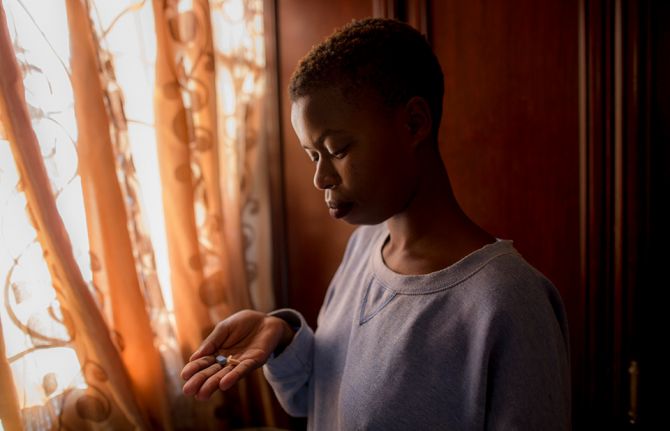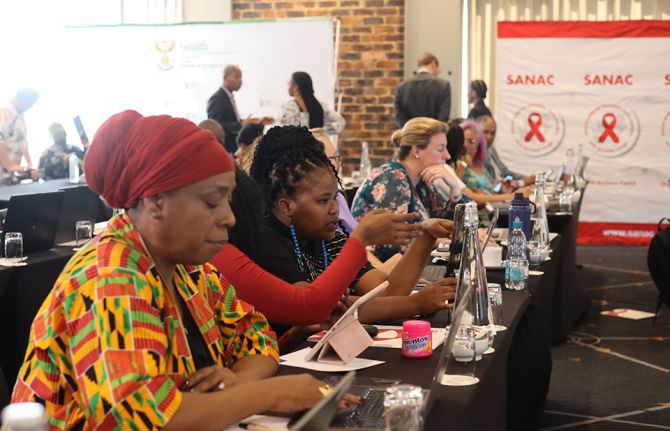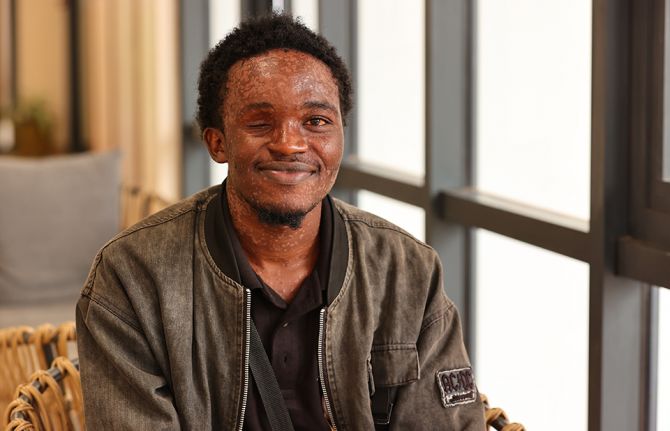

Feature Story
New modelling research shows partial progress in South Africa’s response to HIV
28 June 2019
28 June 2019 28 June 2019South Africa is making strong progress in scaling up HIV testing and increasing viral suppression in patients receiving antiretroviral therapy (ART), but is not yet reaching its targets for treatment coverage and HIV prevention, according to an updated Thembisa model released at the 9th South Africa AIDS Conference in June.
The results of the annual updated Thembisa model (version 4.2) was released by researchers at the Centre for Infectious Diseases Epidemiology and Research, University of Cape Town. Work on the Tembisa HIV estimates is funded by UNAIDS through a grant from the United States Centres for Disease Control (CDC), and used data from multiple sources including recent surveys by the Human Sciences Research Council and the Medical Research Council of South Africa.
South Africa is committed to reaching the UNAIDS 90–90–90 Fast-Track targets by 2020. The aim of this strategy is to ensure that 90% of people living with HIV are tested and know their status, that 90% of people living with HIV are receiving treatment, and 90% of people on treatment have a suppressed viral load. The latest Thembisa estimates indicate that South Africa reached 90–68–88 by mid-2018. This means that total viral load suppression among all people living with HIV was 55%, which is 18 percentage points below the target of 73%.
The Thembisa model also estimates that men had a lower uptake of HIV testing and treatment compared to women. As a result, in 2018, 47% of HIV-positive men were virally suppressed compared to 58% of HIV-positive women. This was also reflected in annual AIDS-related deaths which halved from 2010 to 2018, but with men increasingly over-represented.
Women accounted for 62% of new HIV infections in adults from 2017 to 2018. The lead developer of the Thembisa model, Leigh Johnson, said two factors were hampering progress on reducing HIV incidence: low ART coverage and the need to improve linkage and retention in care, and evidence of reduced condom use. He noted that adolescent girls and young women (15–24 years) account for 31% of all sexually-acquired HIV and require special attention.
The Thembisa results highlighted concern about slow progress in reducing HIV incidence. The model estimates that in the last year there were more than 240 000 new HIV infections in South Africa, which was a reduction of less than 40% from 2010. The UNAIDS target is to reduce annual new infections by 75% between 2010 and 2020. To achieve this, South Africa would need to reduce new infections to fewer than 100 000 by mid-2020, which poses a significant challenge.
The Thembisa results show that that KwaZulu-Natal, the province with the most severe HIV epidemic, succeeded in reducing its annual new HIV infections by 49% from 2010 to 2018. Thembisa also estimates that annual new infections among children declined 55% from 29 000 in 2010 to 13 000 in 2018.
More detailed results and model details are available on the Thembisa website: https://thembisa.org/downloads



